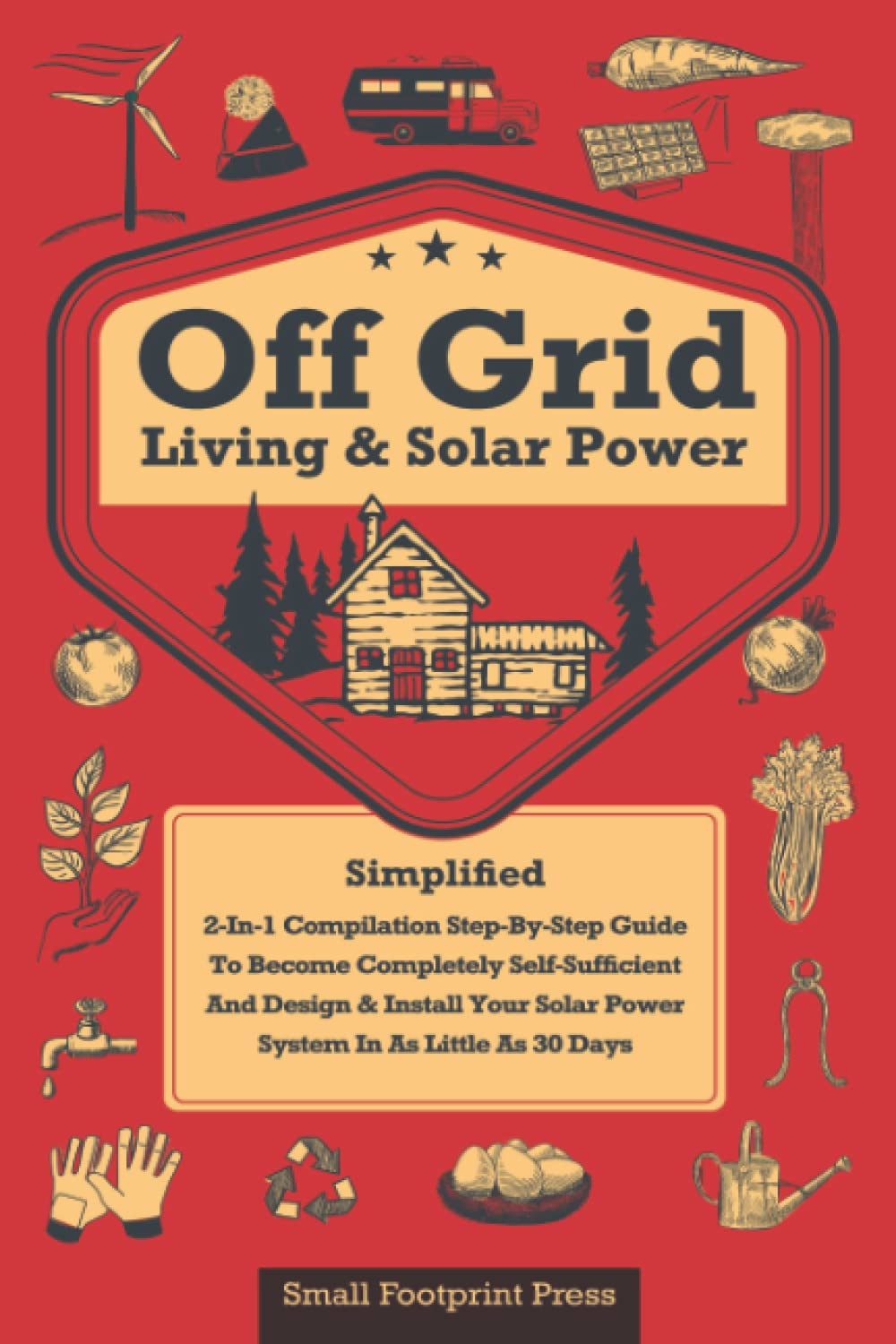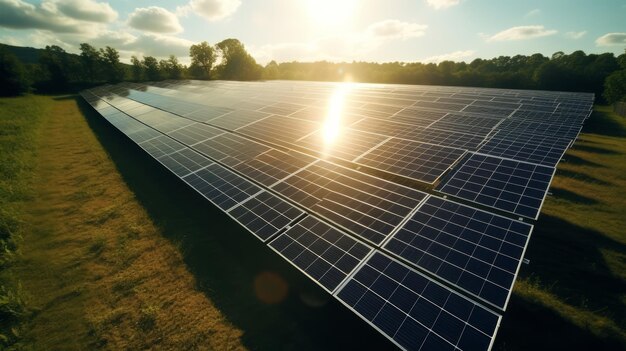
Embrace Freedom: Off-Grid Living with Renewable Energy – A Complete Beginner’s Guide
Imagine a life where your electricity bill is non-existent, your power isn’t dictated by the grid, and your footprint on the planet is significantly reduced. This isn’t a fantasy; it’s the reality of off-grid living with renewable energy. As more people seek self-sufficiency, resilience, and a deeper connection to sustainable practices, going off-grid is becoming an increasingly attractive option.
This comprehensive guide is designed to demystify off-grid living, especially for beginners. We’ll explore the core concepts, the renewable energy technologies that power this lifestyle, and the practical steps to turn your dream of energy independence into a tangible reality.
What Exactly Is Off-Grid Living?
At its simplest, off-grid living means disconnecting from public utilities like the centralized electricity grid, municipal water, and sewer systems. Instead of relying on these external services, off-gridders generate their own power, source and manage their own water, and handle their own waste on their property.
While some might imagine a rustic cabin in the wilderness, off-grid living can take many forms – from remote homesteads to modern, custom-built homes equipped with cutting-edge technology. The common thread is self-sufficiency and resource independence.
Benefits of Going Off-Grid:
- Energy Independence: No more monthly electricity bills! You generate your own power, making you immune to price hikes and outages.
- Environmental Stewardship: By relying on clean, renewable energy sources, you drastically reduce your carbon footprint.
- Increased Resilience: You’re prepared for natural disasters, grid failures, or economic instability. Your home remains powered when others go dark.
- Freedom & Autonomy: Live where you want, often in more serene and private locations, without the constraints of utility hookups.
- Reduced Cost of Living (Long-Term): While initial setup can be an investment, the long-term savings on utility bills are substantial.
- Sustainable Lifestyle: Encourages mindful consumption and a deeper understanding of your resource usage.
Challenges to Consider:
- Initial Investment: Setting up robust renewable energy systems, water systems, and waste management can be costly upfront.
- System Sizing & Design: Requires careful planning and understanding of your energy needs to avoid shortages.
- Maintenance & Monitoring: Off-grid systems require regular checks and occasional maintenance to ensure optimal performance.
- Resource Management: Learning to conserve energy, water, and manage waste effectively is crucial.
- Legal & Permitting: Zoning laws and building codes can vary, sometimes making off-grid installations complex.
- Lifestyle Adjustment: It often involves a shift in mindset towards resourcefulness and self-reliance.
The Heart of Off-Grid: Renewable Energy Systems
The cornerstone of any successful off-grid setup is a reliable renewable energy system. These systems harness natural, replenishable sources to provide electricity for your home.
1. Solar Power (Photovoltaic – PV Systems)
Solar power is by far the most popular and accessible renewable energy choice for off-grid homes. It converts sunlight directly into electricity using photovoltaic panels.
- How it Works: Solar panels absorb sunlight, creating an electric current. This DC (Direct Current) electricity then flows to an inverter, which converts it into usable AC (Alternating Current) electricity for your home appliances. Excess power is stored in batteries for use when the sun isn’t shining.
- Key Components:
- Solar Panels: The "collectors" of sunlight.
- Charge Controller: Regulates the voltage and current from the solar panels to the batteries, preventing overcharging.
- Battery Bank: Stores excess energy for nighttime use or cloudy days.
- Inverter: Converts DC power from batteries/panels into AC power for household appliances.
- Mounting System: Racks or frames to secure panels (roof-mount or ground-mount).
- Pros:
- Widely available sunlight in many regions.
- Relatively quiet operation.
- Low maintenance once installed.
- Modular, allowing for expansion.
- Cons:
- Intermittent (doesn’t produce at night or on heavily overcast days).
- Requires significant space for panels.
- Performance can be affected by snow, dirt, or shade.
2. Wind Power (Wind Turbines)
Wind turbines capture the kinetic energy of wind and convert it into electricity. They are an excellent option in areas with consistent wind speeds.
- How it Works: Wind spins the blades of the turbine, which turns a generator to produce electricity. Like solar, this power can be directly used, or stored in batteries.
- Key Components:
- Wind Turbine: The blades and generator assembly.
- Tower: Elevates the turbine to catch optimal wind.
- Charge Controller: Regulates power to batteries.
- Battery Bank: Stores generated power.
- Inverter: Converts power for household use.
- Pros:
- Can produce power 24/7 if wind is consistent.
- Often complementary to solar (wind at night, solar during day).
- Efficient in windy locations.
- Cons:
- Requires consistent wind – not suitable for all locations.
- Can be noisy (though modern turbines are quieter).
- Potential for visual impact or local regulations.
- Installation can be more complex due to tower height.
3. Hydropower (Micro-Hydro Systems)
If you have a reliable, year-round stream or river with a significant drop (head), micro-hydro can be an incredibly efficient and consistent power source.
- How it Works: Water flows through a pipe (penstock) down a slope, building pressure. This pressurized water then spins a turbine connected to a generator, producing electricity.
- Key Components:
- Intake: Where water enters the system.
- Penstock: The pipe that carries water to the turbine.
- Turbine/Generator: Converts water flow into electricity.
- Battery Bank & Inverter: For storage and conversion.
- Pros:
- Very consistent power generation (can be 24/7).
- Extremely efficient with the right conditions.
- Low operating costs once installed.
- Cons:
- Highly site-specific (requires a flowing water source with sufficient "head").
- Initial setup can be complex and expensive.
- Potential environmental impact on the stream if not properly designed.
- Requires permits and adherence to water rights.
4. Energy Storage: The Crucial Role of Batteries
No matter which renewable energy source you choose, battery banks are absolutely essential for off-grid living. Renewable sources are often intermittent (sun isn’t always shining, wind isn’t always blowing), so batteries store the excess energy generated during peak production times for use during low production times or at night.
- Common Battery Types for Off-Grid:
- Lead-Acid Batteries (Flooded, Sealed AGM, Gel): The most traditional and often most affordable. Require maintenance (flooded) or are maintenance-free (sealed).
- Lithium-Ion Batteries (LiFePO4): More expensive upfront but offer longer lifespan, higher efficiency, lighter weight, and require no maintenance. Becoming increasingly popular.
- Sizing is Key: Your battery bank must be large enough to meet your energy demands during periods without generation (e.g., several cloudy days in a row). This is a critical part of system design.
5. Backup Generators
While the goal is 100% renewable energy, a backup generator (usually propane, diesel, or gasoline-powered) provides peace of mind. It can kick in during extended periods of low renewable energy production (e.g., long stretches of cloudy, windless days) or if there’s an unexpected surge in demand. They help ensure your batteries don’t get fully depleted, which can damage them.
Designing Your Off-Grid System: Step-by-Step
Building your off-grid energy system might seem daunting, but breaking it down into manageable steps makes it achievable.
Step 1: Assess Your Energy Needs (The Energy Audit)
This is the most crucial first step. You can’t design a system if you don’t know how much power you need.
- List Every Appliance: Go through your current home (or plan for your future off-grid home) and list every electrical device you use.
- Determine Wattage: Find the wattage (W) of each appliance (often listed on a sticker or in the manual).
- Estimate Daily Usage: For each appliance, estimate how many hours per day you use it.
- Calculate Daily Watt-Hours (Wh): Multiply Wattage by Hours Used. Sum these up for a total daily Watt-hour consumption. This is your "energy appetite."
- Example: A 60W light bulb used for 5 hours/day = 300 Wh/day.
- Consider Peak Load: What’s the maximum amount of power you might need at any one moment (e.g., microwave, well pump, and washing machine all running)? This determines your inverter size.
- Energy Efficiency is Your Best Friend: The less energy you use, the smaller (and cheaper) your system needs to be.
- Use LED lighting.
- Choose energy-efficient appliances (Energy Star rated).
- Consider propane or wood for heating water, cooking, and heating space.
- Unplug "vampire" loads.
Step 2: Choose Your Energy Source(s)
Based on your location, resources, and energy audit:
- Solar: Ideal for most sunny locations.
- Wind: Great for consistently windy areas, often complementing solar.
- Micro-Hydro: Fantastic if you have the specific water resources.
- Hybrid Systems: Often the most reliable. Combining solar and wind, for example, can ensure power production even when one source is low.
Step 3: Sizing Your System
Once you know your energy needs (Watt-hours per day) and chosen sources:
- Solar Panel Sizing: Calculate how many panels you need to generate your daily Watt-hour requirement, accounting for "peak sun hours" in your location and system losses.
- Battery Bank Sizing: Determine the total Amp-hours (Ah) or Kilowatt-hours (kWh) needed to store enough energy for your "days of autonomy" (how many days you want to last without sun/wind). Consider depth of discharge (DoD) for battery longevity.
- Inverter Sizing: Needs to be large enough to handle your peak electrical load.
- Charge Controller Sizing: Must be compatible with your solar array’s voltage and current, and your battery bank.
This step often involves specialized software or consultation with an experienced off-grid system designer, especially for larger systems.
Step 4: Installation & Safety
- DIY vs. Professional: Smaller, simpler systems can sometimes be DIY for the very handy, but larger, complex systems almost always benefit from professional design and installation for safety, efficiency, and longevity.
- Permits & Codes: Check local building codes, electrical codes, and zoning regulations. Many areas require permits even for off-grid systems.
- Safety First: Electricity is dangerous. Always follow manufacturer instructions, use proper safety gear, and consider professional help for high-voltage components.
- Proper grounding.
- Fusing and circuit breakers.
- Battery ventilation (for lead-acid).
Beyond Energy: Other Off-Grid Essentials
True off-grid living goes beyond just electricity. It encompasses all your essential resources.
1. Water Management
- Wells: Drilling a private well is a common solution for potable water. Requires a pump (often a DC pump for efficiency).
- Rainwater Harvesting: Collecting rainwater from your roof into cisterns or tanks. Requires filtration for drinking.
- Springs: If available on your property, a spring can be a reliable water source.
- Filtration & Purification: Essential for any non-municipal water source to ensure it’s safe for drinking and bathing.
2. Waste Management
- Septic Systems: For blackwater (toilet waste) and greywater (sinks, showers). Requires proper design and drainage field.
- Composting Toilets: A popular water-saving alternative to flush toilets, converting human waste into compost.
- Greywater Systems: Diverting water from sinks, showers, and washing machines for irrigation of non-edible plants.
- Solid Waste: Off-gridders often become excellent recyclers and composters to minimize trips to the dump.
3. Food Production
While not strictly part of the "off-grid definition," many off-gridders embrace food self-sufficiency.
- Gardening: Growing your own fruits, vegetables, and herbs.
- Livestock: Raising chickens for eggs, goats for milk, or other animals.
- Food Preservation: Canning, dehydrating, freezing to store harvests.
4. Communication & Connectivity
Even off-grid, most people desire some form of communication.
- Satellite Internet: Common in remote areas, though can be expensive.
- Cellular Boosters: Can improve cell signal in weak service areas.
- Two-Way Radios: For local communication.
Living the Off-Grid Lifestyle: Tips for Success
Transitioning to off-grid living is as much about mindset as it is about technology.
- Embrace Energy Conservation: This is non-negotiable. Every Watt-hour saved is a Watt-hour you don’t have to generate or store. Turn off lights, unplug unused electronics, consider manually operated appliances.
- Learn Basic Maintenance: Understand how your system works and how to perform routine checks and minor repairs. This empowers you and extends the life of your equipment.
- Monitor Your Usage: Install monitors that show your energy production, consumption, and battery state of charge. This helps you understand your system’s performance and adjust your habits.
- Be Prepared for Fluctuations: Weather changes, unexpected demands, or equipment issues can happen. Have a backup plan and adjust your expectations.
- Build Community: Connect with other off-gridders. They can be invaluable sources of advice, support, and even shared resources.
- Start Small (If Possible): If a full off-grid home seems too much, start with a small cabin, an RV, or even just powering a shed with solar to learn the ropes.
Your Journey to Energy Independence
Off-grid living with renewable energy is more than just a housing choice; it’s a commitment to a sustainable, independent, and resilient lifestyle. While it requires careful planning, an initial investment, and a willingness to learn, the rewards – freedom from utility bills, a reduced environmental impact, and a profound sense of self-reliance – are truly invaluable.
Take the first step today: assess your current energy usage, research the renewable resources available in your desired location, and start dreaming of a future powered by the sun, wind, and water!



Post Comment